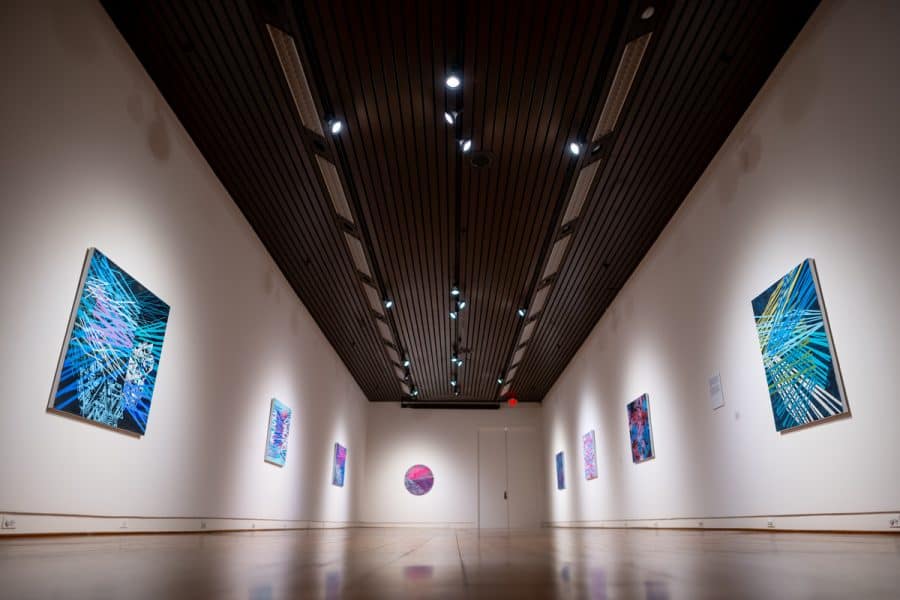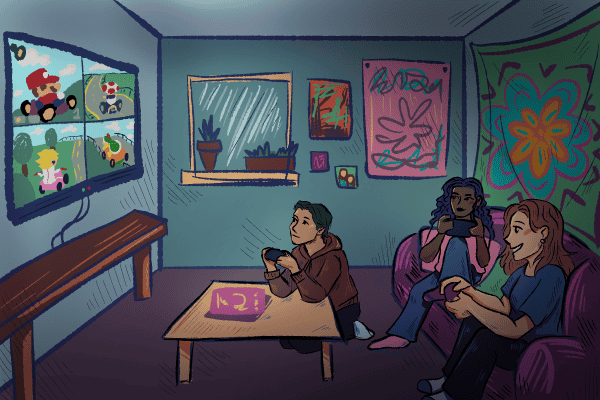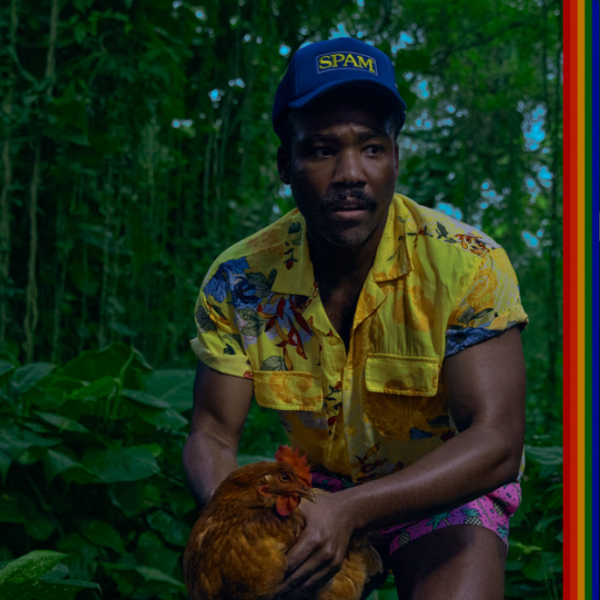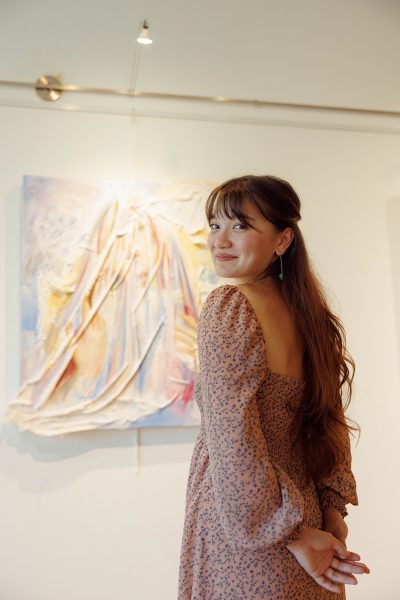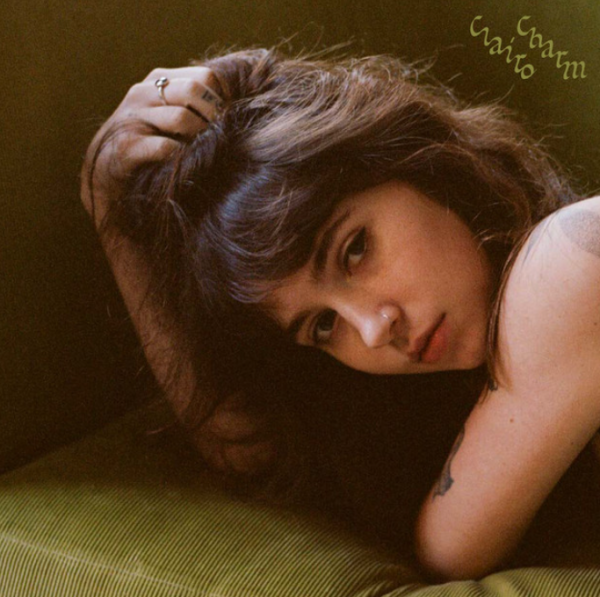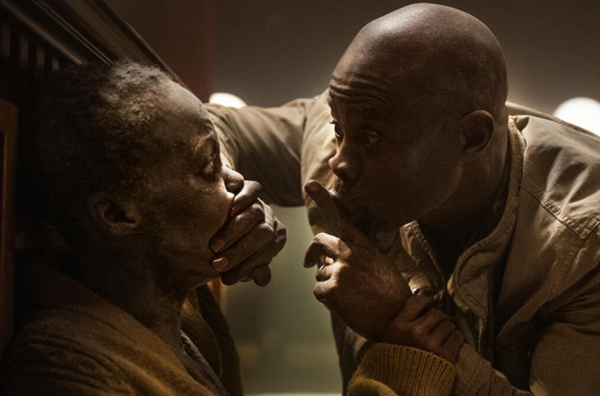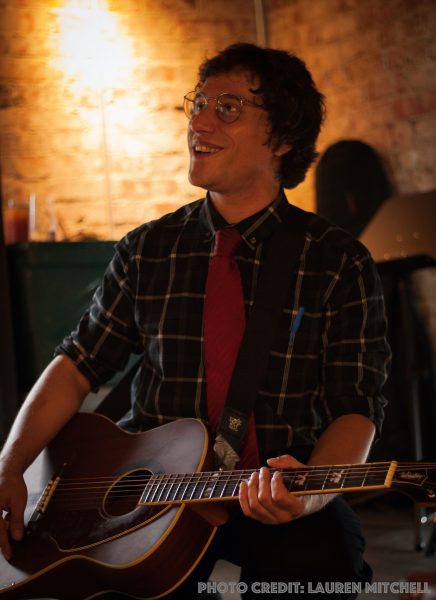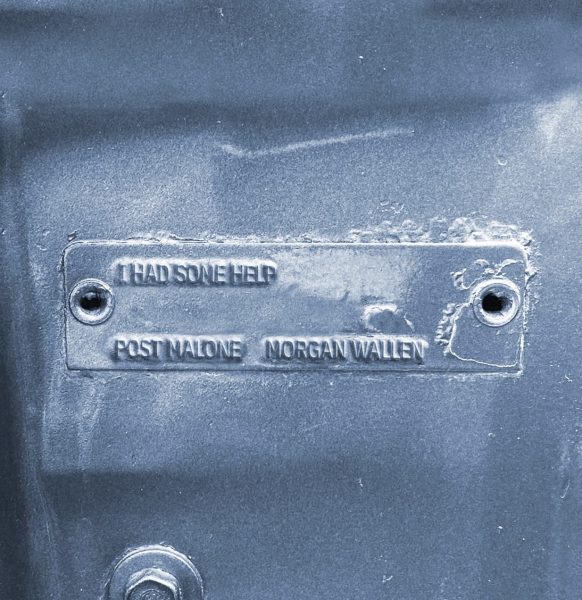Sarah Moody Gallery of Art Exhibits Cosmically Inspired Art
October 2, 2022
The Sarah Moody Gallery of Art will be exhibiting “Out of Thin Air: Microscopic Journeys Through Cosmic Landscapes,” a collaboration between artist Rebecca Rutstein and planetary scientist Julia Cartwright until Oct. 14.
The exhibit, supported by the Collaborative Arts Research Initiative and the Farley Moody Galbraith Endowed Exhibition, is a culmination of work done by Rutstein and Cartwright over the past two years.
The Collaborative Arts Research Initiative is an interdisciplinary, arts-focused effort driven by faculty at The University of Alabama. CARI supports interdisciplinary and transdisciplinary relationships and encourages faculty in diverse fields to pursue collaborative arts projects and research.
Cartwright is an assistant professor for the University of Alabama Department of Geological Sciences and a CARI fellow. She investigates meteorites to understand how the solar system was formed, and she reached out to Rutstein about working together in February of 2020.
Rutstein is a multidisciplinary artist whose work bridges art, science and technology, spanning various mediums such as painting, sculpture, interactive installation and public art. She has worked alongside marine, molecular and planetary scientists, and much of her work is inspired by the natural world.
“It’s been a really life-changing experience to be collaborating with scientists and deriving inspiration from their work and processes,” Rutstein said.
“Out of Thin Air: Microscopic Journeys Through Cosmic Landscapes” displays the work of both Cartwright and Rutstein in a unique way. The paintings bring samples of meteorite slices to life, transforming what they observed under a microscope and amplifying those small images into large paintings.
The two have been collaborating on this exhibition for a little over two years, working mostly virtually because of the pandemic.
“I’m excited about how the University community will interact with the paintings,” Cartwright said. “I feel like the breadth of the work is already having some effect on people, and I’m curious to see what might happen next.”
Rutstein said she feels that knowing what inspired the work gives viewers an enhanced understanding and appreciation for it. She said that she and Cartwright hope that people can enjoy the art in a visual way and that it sparks their interest in the world of planetary geology.
One piece of work in the exhibit is titled “Mars II” and is inspired by samples of Nakhlite meteorites, which crashed to Earth from Mars and have intricate crystal structures. Rutstein’s painting has a black background and an intricate crystalline pattern across it in shades of pastel blue, pink, purple and white.
“I love the idea of there being an educational component to the work,” Rutstein said. “I think that there’s real value in having disciplines come together.”
Both collaborators feel very connected to the project and said that seeing it displayed in the gallery is a rewarding and gratifying experience. They hope this project highlights how art and science can come together.
“It’s been quite a journey,” Cartwright said. “I think it has also made me think about being more creative with what I do.”
Cartwright and Rutstein plan to continue collaborating on artistic projects and research with a grant from the Alabama Council on the Arts.
They are looking into creating public art, such as sculptures or murals, that could be displayed around Tuscaloosa or within its local museums. Additionally, the grant will allow them to do more outreach in schools and the community and will also provide the two with new exhibition opportunities.
Rutstein and Cartwright said they want the exhibit to engage viewers in many ways and hope to pique people’s interest in science and the natural environment.
“One of the overarching hopes I have for my work is to connect people more deeply with the natural world,” Rutstein said. “Maybe it would cause the person to think differently about the environment and care more deeply about it.”
Much of Rutstein’s art is inspired by the hidden networks and structures found in the natural world, and she said it was great to see her paintings come to life in the Sarah Moody Gallery.
“For me it’s a win-win if the work can speak in a visual language but then also have this added engagement with the viewer,” Rutstein said.
Vicki Rial, the exhibitions coordinator for the Sarah Moody Gallery of Art, described the paintings as layered, dynamic and energetic. The use of vibrant and contrasting colors that Rutstein uses makes the paintings fill the gallery space.
One painting she pointed out is titled “Interference.” It features acrylic and spray paint on a canvas with a black background. Scattered across the painting are several dark blue, light blue, white and purple lines going in different directions. The lines create an energy that radiates out of the painting and are meant to represent cosmic rays, which are high-energy particles that are emitted from stars.
“It’s a university collaboration that’s special, and it’s a beautiful show,” Rial said.
Rial also pointed out “Vesta’s Matrix,” a painting inspired by a meteorite sample collected from Antarctica. Rial said the contrast between the colors on the canvas makes it stand out. The painting has bright blue and dark blue lines against a black background with red and white spots
Rial said she has several favorite pieces in the exhibit and hopes students take time to read the wall text and learn information about the universe that they might not have thought about before.
“I think it’s important for students to see what others are doing in art centers in the country,” Rial said. “We try to acquaint students and the community with art that they may not see in other areas of the city or state.”
The Sarah Moody Gallery of Art is free to students and is located near the center of campus by Woods Quad. To learn more about the gallery and upcoming exhibits, click here.

